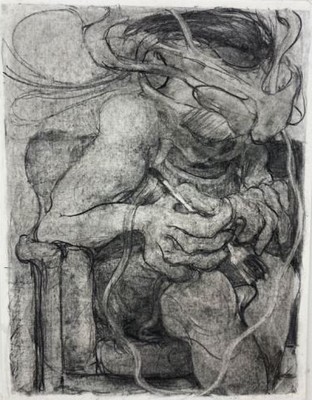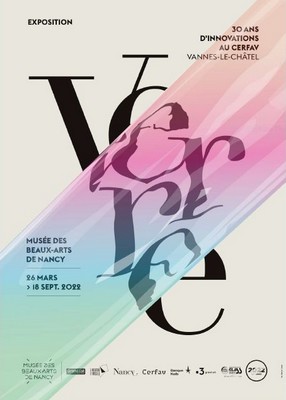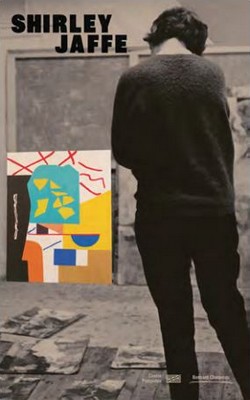Adrian Ghenie
Pace Gallery, Seoul
September 2 - October 22, 2022
Self-Portrait with Paintbrush, 2022
© Adrian Ghenie, courtesy Pace Gallery
Pace presents an exhibition of new works on paper by Adrian Ghenie at its newly expanded gallery in Seoul. This presentation marks Adrian Ghenie’s first solo show in Asia and coincide with the inaugural edition of Frieze Seoul. Presented in the main gallery space of Pace’s Seoul arts complex, the show—spread across two floors of exhibition space— includes 28 variously sized charcoal drawings that reflect Adrian Ghenie’s experimentations in mark-making and figuration.
Adrian Ghenie, whose practice spans painting, drawing, and collage, is best known for his lush oil paintings of figures in layered, cinematic works that mine visual, political, and social histories, including those of his native Romania. Over the last five years, Ghenie has often employed the art of a particular genre or era as a starting point to develop a new body of work. He creates a kind of conflict between the story of that period and his own autobiography—this wrestling match between stories and narratives is mediated by his strokes and swathes of rich, blended color and luxurious impasto. The result is a dreamscape of visceral, distorted images layered with renditions of collaged elements and unfinished gestures.
Adrian Ghenie has now added charcoal drawing to his repertoire, and this forthcoming presentation with Pace in Seoul will be his first exhibition devoted entirely to the medium. The works in the show examine banal and sometimes grotesque figures engaged in the most typical actions of a technological society, marrying the tradition of Otto Dix and George Grosz to a contemporary vision of people obsessed with their cell phones, masked with N95s, or idly fidgeting with remote controls as they surrender to their televisions.
Beyond this handling and interpretation of the subject matter, the medium itself presents a unique challenge. The artist has devised a new process for using charcoal, almost in the manner of old master prints. He bends the dry, unforgiving charcoal to his will, achieving the liquid, sensuous imagery for which he is known.
Pace’s exhibition of Adrian Ghenie’s new body of works on paper in Seoul reflects its commitment to spotlighting its robust, international contemporary program at its expanded arts complex in the Korean capital. A Korean translation of the artist’s recent book The Hooligans—produced by Pace Publishing, the gallery’s imprint—will be available to view and purchase in the new Osulloc Tea House, which opens at the Seoul gallery complex on the occasion of the Frieze art fair in the city and will host rotating displays of prints, editions, and multiples as well as titles from Pace Publishing.
Adrian Ghenie (b. 1977, Baia Mare, Romania) adopts elements from the tradition of history painting while subverting its conventions by representing provocative subjects and undermining norms of realism. A formally trained painter, he synthesizes his technical abilities with conceptual tendencies from Dada, merging representational and abstract imagery. His practice conflates and extends painting techniques of the past, displaying both a Baroque mastery of chiaroscuro and a gestural handling of paint indebted to Abstract Expressionism. With pronounced brushwork that introduces distortions of depicted space and his subjects’ features, Adrian Ghenie’s art unearths feelings of vulnerability, frustration, and desire, invoking human experience and themes of the collective unconscious.
PACE GALLERY, SEOUL
2/3F, 267 Itaewon-ro, Yongsan-gu, Seoul











